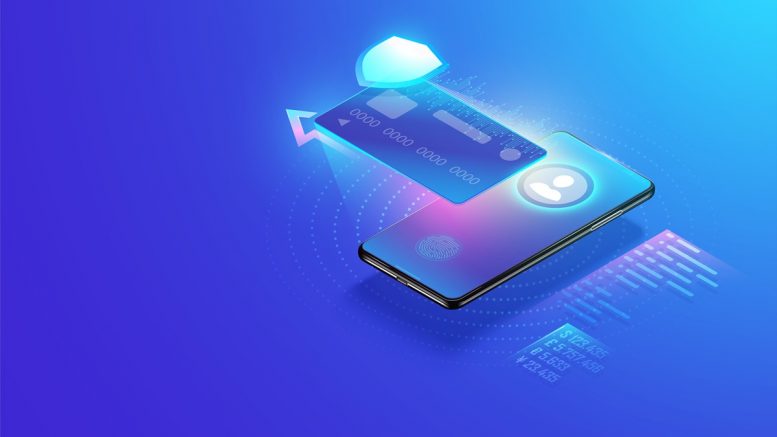The healthcare industry is all about patient outcomes, but several operational priorities are integral to achieving that goal, one of those is ensuring secure processes for payments.
Over the years, the healthcare payments landscape has evolved dramatically, swapping paper currency and checks with digital transactions. While this shift has facilitated speed and simplicity, it has also exposed the sector to inherent cybersecurity risks.
Why Healthcare Payments Require Top-Level Security
Generally, all kinds of financial transactions must be highly secure and reliable, but the necessity is even more prominent in an industry that deals with sensitive information.
Healthcare organizations know that the commitment to keeping their patients’ records safe is a top priority. Whether medical, financial or personal, providers have an obligation under the Health Insurance Portability and Accountability Act (HIPAA) to maintain data integrity. However, this has been notoriously difficult to achieve, especially in today’s hyper-connected economy.
It doesn’t help that the medical sector is one of the most targeted for cyberattacks. In 2023, 725 healthcare data breaches involving 500 or more records were reported to the Office for Civil Rights (OCR). In the first quarter of 2024, the OCR received 125 data breach reports.
Challenges in Healthcare Payment Processes
Navigating payments in healthcare can be challenging as the entire journey — from the moment a patient receives care to the final bill settlement — is fraught with complications.
Multiple Party Involvement
Unlike other industries, payment processing in healthcare typically involves multiple parties, including the patient, insurance companies and third-party administrators. Variabilities in the preferred payment methods, such as self-pay, deductibles, insurance claims and copayments, add complexity, causing confusion and delays in payment processing.
These challenges make maintaining blanket security difficult, as several potential breach points exist. In turn, they can upset internal accounts receivable processes, which ties directly into the organization’s ability to provide quality patient care and further services.
Data Security and Compliance
Data security is one of the most significant problems with payment processing. Between the increased number of digital payment transactions and the complexity of compliance, especially for credit card payments, healthcare organizations must take additional measures to protect their patients’ information from unauthorized access.
Sometimes, the situation is outside of the provider’s control. For instance, their chosen payment processor may not be current on the latest compliance policies.
Payment Fraud
Healthcare payment fraud exists in many forms — identity theft, fraudulent claims and embezzlement. The National Health Care Anti-Fraud Association conservatively estimates these events to cost 3% of total healthcare expenditures, underscoring the need for robust offline security measures.
How Healthcare Providers Can Secure Patient Payment Methods
These tips can help healthcare organizations protect payments and the personal data shared through these transactions.
Prioritize Data Protection and HIPAA Compliance
Healthcare payments have strict legal infrastructure to follow under Payment Card Industry Data Security Standards and HIPAA regulations. That means any payment processing vendor must have robust safeguards to protect patient information and meet compliance requirements. Medical institutions must prioritize solutions that adhere to stringent security measures to protect sensitive data throughout the payment process.
One way to ensure this is to seek partnerships with vendors that have leading industry certifications. Some companies may claim to be compliant but haven’t actually implemented necessary security measures or undergone audits to obtain certification.
Incorporate Only Relevant Information
Healthcare payment processes must only include the necessary data to run the transaction successfully. For credit cards, this typically consists of the name, billing address, card number, CVV and expiration date. Only bank account and routing numbers may be required for ACH transactions.
There’s no reason to include protected health information, such as patient diagnosis or treatment, to process payments. Certain data may be necessary when reconciling the 837 EDI for insurance claims for accounting purposes, but there is no need to involve such private details during the actual payment processing.
Insist on Point-to-Point Encryption (P2PE)
P2PE is a methodology for securing online payment information by encrypting it from the time the payer swipes their card until it reaches the designated endpoint where it is decrypted. Encryption essentially scrambles the transaction data, so even if it is intercepted during transmission, it appears to the hacker as gibberish.
Report Security Incidents Right Away
On average, it takes around 207 days to detect a data breach and another 70 days to contain the damage. This lengthy delay can be highly detrimental to a healthcare provider’s funding and expose them to future attacks. Shining a spotlight on incidents as soon as they occur can help organizations plug gaps in their security infrastructure and implement needed upgrades to maintain payment integrity.
Select Payment Gateways With Built-In Fraud Detection Capabilities
Modern payment processing solutions incorporate fraud detection capabilities. These add-on features can help healthcare providers identify and prevent fraud, saving them money and maintaining the integrity of their payment ecosystem.
One key consideration is that these features should be able to integrate seamlessly with existing hospital management software to facilitate streamlined workflows and quicker reporting. Such integrations also eliminate the risk of errors from manual data entry and save valuable time.
Improve Cybersecurity Spending
Recent statistics show that 56% of healthcare providers allocate less than 10% of their IT budgets to securing their digital systems. Given the rate at which cyberattacks are escalating, especially in the medical industry, 10% is not nearly enough to maintain a resilient security infrastructure. Organizations must review their spending priorities and endeavor to ramp up allocations to cybersecurity or continually risk exposure to the ever-evolving threat landscape.
Ensure Secure Healthcare Payments
Medical payment security is vital in shaping patient experiences and ensuring optimal outcomes. Emphasizing encrypted transactions, promptly reporting security breaches and improving cybersecurity measures reflect a commitment to protecting patient financial data while enhancing healthcare service efficiency.
By Zac Amos, rehack.com





